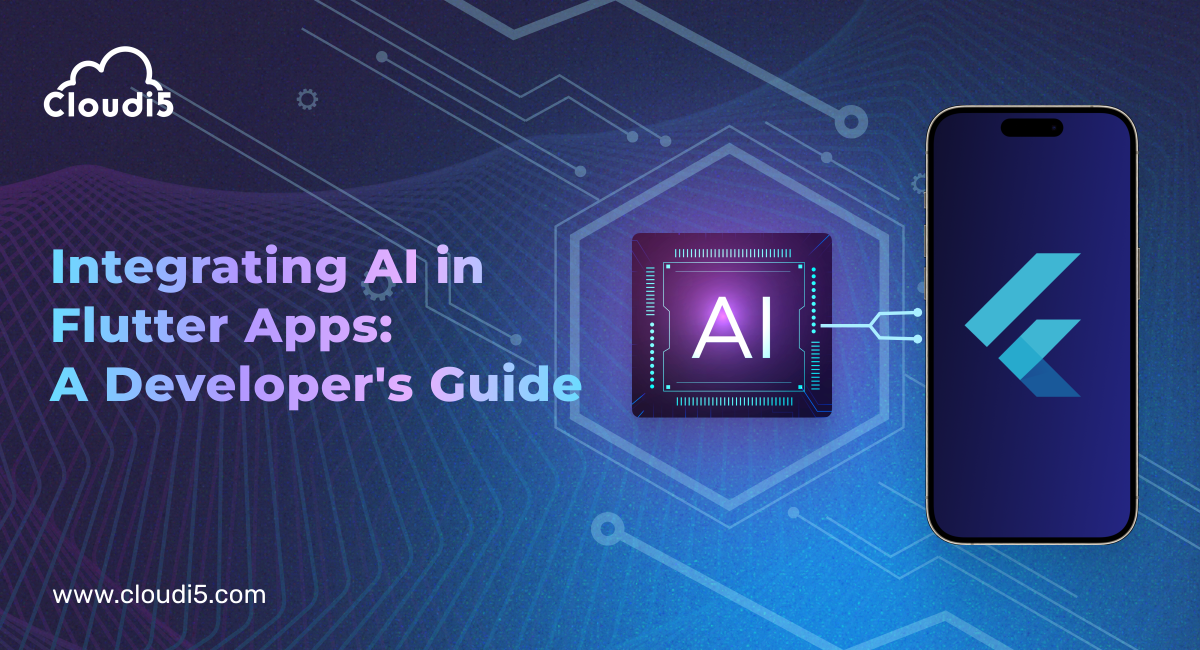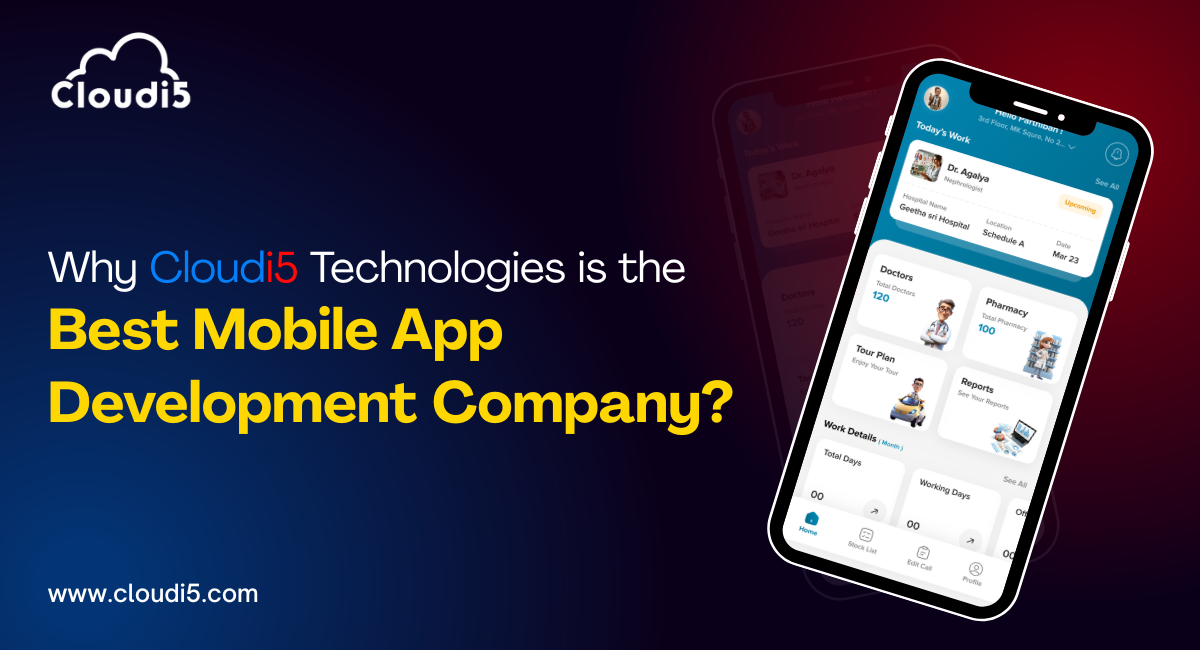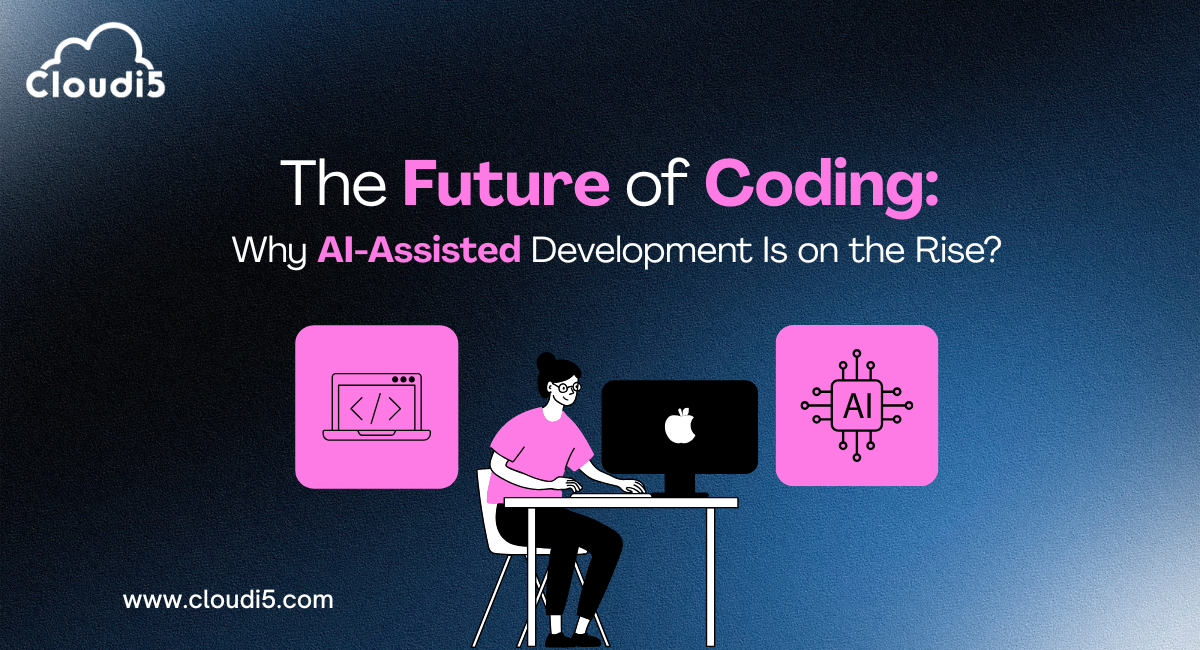
Integrating AI In Flutter Apps: A Developer's Guide
Flutter has taken the mobile app development world by storm with its ability to build beautiful, cross-platform apps. But what if you could add an extra layer of intelligence to your Flutter creations?
By integrating AI into your Flutter apps, you can bring a new level of user experience, automation, and functionality. This blog will serve as your guide to incorporating AI into your Flutter development workflow.
Understanding AI Integration
Before we talk about Flutter, let's understand what AI integration is. Simply put, AI integration means adding artificial intelligence features to your software. This can include things like machine learning, natural language processing, or computer vision in your Flutter app.
There are two main ways to do this:
- Full-fledged AI Model Integration: This means creating and training your own AI model for your app. You have full control and can customize it to fit your needs, but it requires a lot of AI knowledge.
- Cloud-based AI Services: This means using ready-made AI models and services from cloud platforms like Google Cloud AI, Amazon Web Services (AWS) AI, or Microsoft Azure Cognitive Services. This option is quicker and easier, especially for simple AI tasks.
The Benefits of AI Integration in Flutter Apps
Adding AI to your Flutter apps has many benefits:
- Better User Experience: AI can make the app more personal for each user. For example, a recommendation engine can suggest products in a shopping app, or a chatbot can help answer questions.
- Automated Tasks: AI can handle repetitive tasks. This could mean sorting images, analyzing user reviews, or managing content.
- Improved Efficiency and Performance: AI can look at lots of data to find patterns, helping you make better decisions and improve the app.
- More User Engagement: AI features like chatbots or voice assistants can keep users interested and coming back.
- New App Features: AI allows for new features in your app. Examples are voice search, real-time image translation, or recognizing objects in games.
Why Consider AI for Your Flutter App?
AI offers real benefits for Flutter app development:
- Better User Engagement: AI can personalize the app based on user behavior. For example, a fitness app could suggest workouts, or a shopping app could suggest products. This keeps users more engaged and loyal.
- Intelligent Automation: AI can automate tasks in the app, like answering questions or providing support. This saves time and money.
- Data-Driven Insights: AI can analyze user data to give you insights. This helps you make better decisions about features, content, and marketing.
- Cross-Platform Compatibility: Flutter can make apps for iOS and Android from the same code. Adding AI through Flutter's plugins makes sure the app works well on both platforms.
How to Integrate AI with Flutter Apps?
Now that you understand the benefits of AI in Flutter apps, let's dive into how to integrate it:
- Choose Your AI Approach: Decide between building your own model (complex but customizable) or using cloud-based services (faster and easier for simpler tasks).
- Select the Right Tools:
- Firebase ML Kit: A set of pre-trained models for tasks like image recognition, text classification, and face detection. Easy to integrate with Firebase in your Flutter project.
- TensorFlow Lite: A mobile-optimized version of TensorFlow for on-device machine learning. Requires more development effort but offers more flexibility.
- Cloud AI Services: Utilize pre-built AI models and services from Google Cloud AI, Amazon Web Services (AWS) AI, or Microsoft Azure Cognitive Services.
- Other Flutter AI Packages: Explore various plugins available in the Pub package manager that offer specific AI functionalities.
- Integration Steps: (This will vary depending on your chosen tool)
- Add the necessary dependencies to your Flutter project's pubspec.yaml file.
- Follow the setup instructions for the chosen AI library or cloud service.
- Use the provided APIs within your Flutter code to interact with the AI models.
- Test and Refine:
- Thoroughly test your AI integration to ensure it functions as expected.
- Refine your implementation based on testing results and user feedback.
Additional Tips:
- Start with a simple AI integration to gain experience before venturing into complex models.
- Consider user privacy and security when handling user data with AI.
- Stay updated on the latest advancements in AI and Flutter for continuous improvement.
By following these steps and keeping these tips in mind, you can successfully integrate AI into your Flutter apps and create truly innovative mobile experiences.
Conclusion
By integrating AI with Flutter, you can create powerful and engaging mobile applications. From personalized experiences to intelligent automation, AI offers a new level of functionality for your apps. Whether you choose to build your own models or leverage cloud services, Flutter, especially with the recent improvements in Flutter 3.22, provides the tools and resources to get you started. So, explore the potential of AI and take your Flutter development skills to the next level!
Trusted By












Leave Comments